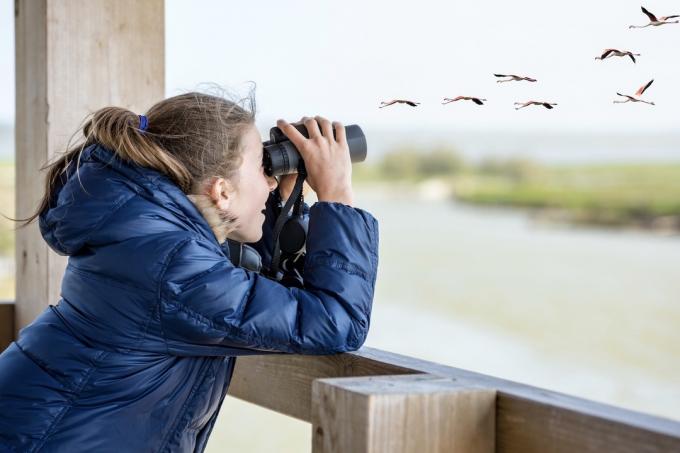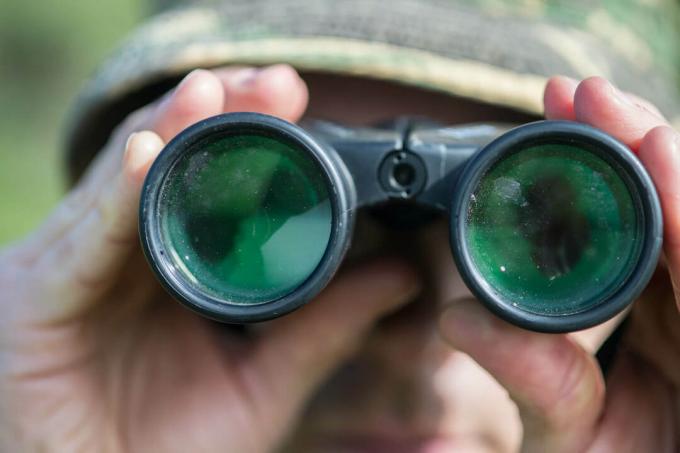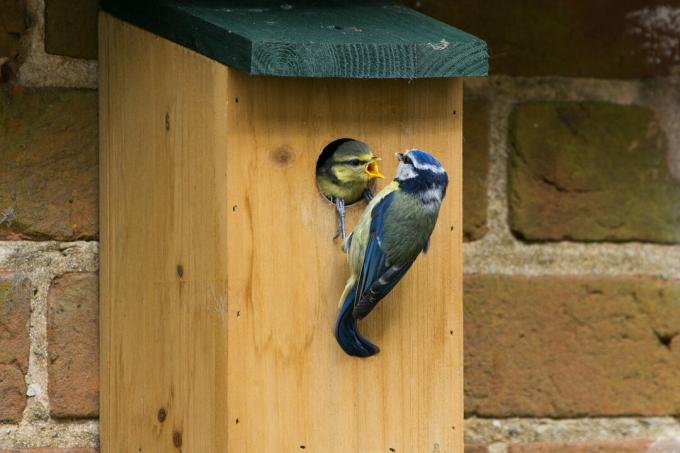Bird watching is growing in popularity as a hobby. For those who would like to try their hand at ornithology, we have prepared ten tips to help you observe birds.

What has been a major trend among the population in England for decades has been gaining more and more importance in Germany over the last few years: The Bird watching is no longer a purely scientific activity, but an exciting and diverse hobby that allows you to spend a lot of time in nature can spend. Whether in your own garden or in the forest and in the field - there are birds everywhere. And with around 250 species native to Germany, there is so much to discover. For all bird enthusiasts and those who want to become one, we have put together a number of tips here to help you get started in the wonderful world of ornithology.
contents
- Tip 1: start small
- Tip 2: the right equipment
- Tip 3: prick up your ears
- Tip 4: take notes
- Tip 5: offer food
- Tip 6: learn from the professional
- Tip 7: use the twilight
- Tip 8: attach nesting aids
- Tip 9: plan trips
- Tip 10: be considerate
Tip 1: start small
A polyphonic bird concert during a morning walk in the forest can be a wonderful experience. However, if you want to hear and differentiate between the individual species, that can be quite a challenge. Such an endeavor can quickly become overwhelming and frustrating, especially for beginners. Therefore, it makes sense to focus on a few species that are easy to identify at the beginning. The birds in your own garden are particularly suitable for this, as these are usually very common and well-known species, such as Blue tit, Great tit, blackbird, robin, magpie or Chaffinch.
Tip 2: the right equipment
Basically, you only need two things to watch birds: binoculars and an identification book. When buying binoculars, beginners do not have to dig deep into their pockets, but there are a few things to keep in mind. The most important parameters here are the magnification, which is necessary for a satisfactory Bird watching should be at least 8 times, and the lens diameter, which is at least 40 mm should be. Such models are available to buy new for between € 150 and € 200. However, it is always worth looking out for used items, as binoculars are quite robust and in this way you can get a much better model for the same price can. Basically, however, you should always try out binoculars before buying to see whether you can handle them well. This is especially true for those who wear glasses.

Lars Svensson's “The Cosmos Bird Guide”, with its richly detailed Illustrations depicting all important species-specific characteristics and further interesting information about the habitat and distribution of the Animals offers.
Tip 3: prick up your ears
In addition to pure observation, bird calls also make up a large part of ornithology. Because in addition to the numerous optical features, the songs of the birds are also species-specific. And since the animals cannot always be shown openly and observed undisturbed, this is often the only way to determine the species. The easiest way to learn bird calls is in combination with the visual impression - when you can also see the singing bird. However, since this is not always the case, there is also the possibility of learning the voices purely acoustically. There are a variety of CDs and apps with audio recordings of the individual bird sounds. In the meantime there are even tools with which you can record bird calls outdoors and which then show you the corresponding species - such as the free app ‘BirdNet’.
It is advisable to start learning bird songs in the late year, as only a few birds sing over the winter and you can thus find a good start. In spring the number of voices increases continuously and you can add new sounds to your repertoire step by step.
Tip 4: take notes
When watching birds, it is always a good idea to write down which birds you saw when and where. On the one hand, this forces one to look closely and identify the animals in their own way, and on the other hand, you get a nice overview of the species you have already seen in total. In addition, the seasonal course of bird activity can be observed in this way and, especially in spring, can be seen how little by little the Migratory birds return from their winter quarters and more and more species can be seen and heard.
Tip 5: offer food
A very simple way to watch birds in your own garden is to create feeding grounds. The animals stay there for a while and you can watch what is happening from a safe distance, even with children. When choosing a feeding place, whether it's bought tit dumplings or self-made bird feederHowever, there are a few things to consider: The feed should be protected from moisture to prevent the formation of mold. In addition, feeding places should be placed out of the reach of cats and constructed in such a way that the Birds do not sit in the feed, in order to spread infectious diseases through the faeces of the animals impede. When it comes to feed itself, different species have different requirements and it pays to focus on diversity.
With our Plantura Year-round bird food for example, it can attract a wide variety of garden birds because it contains a variety of fine seeds, oatmeal, raisins and even mealworms. The protein-rich mixture can be offered all year round and, thanks to the addition of fodder lime, even supports expectant bird parents during the breeding season.
Tip 6: learn from the professional
When acquiring bird calls, it is particularly helpful at the beginning to learn from an experienced ornithologist. This can give tips on which distinctive stanzas to look out for in order to clearly identify the species. For those who don't happen to have such a person in their circle of acquaintances, there are many places Ornithological tours by nature conservation organizations such as the NABU or the LBV, where volunteer experts advise you To hand over knowledge.
Tip 7: use the twilight
You don't have to be an early bird to bird watch. Although the most intense bird song takes place in the morning hours, many songbird species such as blackbird, black redstart or great tit are still active until dusk. Due to the small spectrum of species, this period is also well suited to getting to know the first bird calls as a beginner. As soon as it is completely dark, most of the songbirds fall silent; But if you hold out longer, you have the opportunity to get to know one or the other nocturnal species - such as the field owl, the partridge or the occasional owl.
Tip 8: attach nesting aids
Another way to make bird watching in your own garden more interesting is to offer nesting aids. As with the bird feeder, you can turn this into a handicraft and observation project for the whole family and one Build your own nest box. This gives you the chance to experience the breeding behavior of the animals, from nest building to rearing the young birds. It should be noted that different species have different requirements for nesting aids.

Tip 9: plan trips
If at a certain point you want to look beyond the garden fence and get to know new species, you would do well to change your surroundings as well. Rare species in particular often have specific requirements for their location that can no longer be met in our man-made landscape. These species still find refuge in numerous (bird) sanctuaries and can be observed in their natural habitat.
Tip 10: be considerate
Despite all the joy of observation, it is of course always important to disturb the birds as little as possible. This is particularly important during the breeding season and in the vicinity of nesting sites. Nesting aids should also not be opened during the year, but should only be cleaned in the late year. In protected areas, the paths should not be left in order to chase the animals. Usually there are lookout points from which you can watch the birds from a safe distance. So the animals can go about their business undisturbed and hopefully you can enjoy their sight for a long time to come.
If you want to do something good for the birds, you can also contact us by designing a bird-friendly garden inform.


